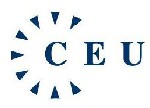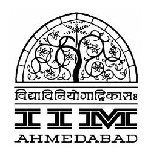Fondazione Eni Enrico Mattei, Italy |
 Fondazione Eni Enrico Mattei (FEEM) Fondazione Eni Enrico Mattei (FEEM) is a nonprofit, nonpartisan research institution devoted to the study of sustainable development and global governance. Founded in 1989, FEEM has grown to become a leading research center of international excellence and reputation, providing timely and objective analysis on a wide range of environmental, energy and global economic issues.
Role in LIMITS: FEEM will coordinate the project and participate in all the research activities providing modelling capability. FEEM will also coordinate WP2 on policy, drawing on its experience on economic policy, and WP7 on dissemination, making the most of the its recognized outreach skills such as those related to publishing and organizing events. Moreover FEEM participates actively to WP1, WP3, WP4 and WP5.
|
International Institute for Applied Systems Analysis, Austria |
 International Institute for Applied Systems Analysis (IIASA) International Institute for Applied Systems Analysis (IIASA) is a non-governmental research organisation based in Austria, that conducts policy-oriented research into problems that are too large or too complex to be solved by a single country or academic discipline: i) problems like climate change that have a global reach and can be resolved only by international cooperative action, or ii) problems of common concern to many countries that need to be addressed at the national level, such as energy security, population aging, and sustainable development.
Role in LIMITS: IIASA participates in LIMITS through two different Programs: the Energy Program (ENE) and the Ecosystem Services and Management Program (ESM) with different roles and responsibilities.
IIASA-ENE will coordinate WP4 on multiple benefits of climate mitigation and implications for development for global 2°C strategies and participate with its MESSAGE-MACRO model in WP1-4. In addition ENE will lead the analysis of hoistorical technology diffusion in WP3. IIASA-ESM will contribute to the land use change analysis in WP3 with its GLOBIOM model and assess the economic implications of land-use changes in WP4. Moreover IIASA is member of the Coordination Board and participates actively in the dissemination activities of the project.
|
Potsdam Institute for Climate Impact Research, Germany |
 Potsdam Institute for Climate Impact Research (PIK) Potsdam Institute for Climate Impact Research (PIK) is a government-funded research institute addressing crucial scientific questions in the fields of global change, climate impacts and sustainable development. At PIK researchers in the natural and social sciences work together to study global change and its impacts on ecological, economic and social systems and to devise general strategies for a sustainable development of humankind and nature. Through data analysis, computer simulations and models, PIK provides decision makers with sound information about climate change and novel concepts for sustainable development.
Role in LIMITS: PIK will coordinate WP1 on scenario development for global 2°C strategies, participate with its REMIND model in WP1-4, contribute to the policy analysis in WP2 with its PRIDE model, and to the land use change analysis in WP3 with its MAgPIE model. Moreover PIK is member of the Coordination Board (WP7) and participates actively in the dissemination activities of the project .
|
Utrecht University, Netherlands |
 UCAD is the collaborative research centre, in which Utrecht University (UU), KNMI (Royal Netherlands Meteorological Institute), TNO (Netherlands Organisation for Applied Scientific Research), Deltares: Research Institute for Water, Soil and Subsurface and KWR (Water Cycle Research Institute) collaborate in the broad area of Sustainable Earth research. One of the areas of research at UCAD involves integrated assessment of global environmental change.
Role in LIMITS: UU leads WP3 on the changes to energy infrastructure and land use patterns in scenario that keeps temperature increase to less than 2°C. UU contributes actively to the research activities of WP1, WP2, WP4 and WP5. Moreover IIASA is member of the Coordination Board (WP7) and participates actively in the dissemination activities of the project (WP6).
|
London School of Economics and political science, United Kingdom |
 The London School of Economics and political science (LSE) is the leading social-science institution in the world, carrying out cutting-edge research, with many of the world's foremost experts in their fields. The Grantham Research Institute on Climate Change and the Environment is the home to climate-change and environment research at LSE.
Role in LIMITS: LSE will contribute to the project in WP1, WP2 and WP4 by providing policy analysis on the capacity required to implement a 2°C strategy, with a special emphasis on the role of investment, financing mechanisms and governance aspects. It will analyse the macro-economic consequences of implementing climate policies in both developing world, and the world’s major economies, drawing on the expertise of the institution in terms of public policy design. The involvement of LSE staff in the high level Advisory Group on Climate Change Finance will provide useful guidance to the analysis of the governance of climate financing. Moreover LSE will participate in WP6 on dissemination activities.
|
Energy Research Centre of the Netherlands, The Netherlands |
 The Energy Research Centre of the Netherlands (ECN) is internationally among the leading centres for energy research and technology development. It conducts both fundamental technology research and energy policy studies for the implementation of safe, efficient and clean energy services. ECN works on a wide range of energy options, among which solar energy, wind energy, biomass, clean fossil fuels, nuclear energy and fuel cells. ECN also plays a constantly increasing role in proffering practical solutions, both technical and policy-related, to the global challenge of climate change.
Role in LIMITS: ECN has as main task in this project the exploration of the interactions between the energy system and climate policy. It will probably mostly undertake this research task with the TIAM-ECN model, but not necessarily exclusively with it, since plenty experience is available at ECN with other integrated assessment models such as DEMETER and MERGE. Also other quantitative tools may be used for the research questions that ECN will seek to answer, including socio-economic technology assessments. The general thrust of the analysis performed by ECN will be investigating the costs and nature of new energy technologies able to establish environmental sustainability. As specific tasks ECN will do most of its research work under WP2 on the role of global and local policies in mobilizing the global energy technology transformation. ECN will also have a significant role in management and other activities, particularly as described under, but not restricted to, WP5. Given is broad experience in the field of energy systems and technology analysis, ECN will play a role of at least some moderate size in essentially every other workpackage as well.
|
Joint Research Centre, Institute for Environment and Sustainability, European Commission, Italy |
 Joint Research Centre, Institute for Environment and Sustainability, European Commission (JRC-IES) Joint Research Centre, Institute for Environment and Sustainability, European Commission (JRC-IES), the Institute for Environment and Sustainability, is one of the seven institutes that constitute the Joint Research Centre (JRC) of the European Commission. The mission of IES is to provide scientific and technical support to EU strategies for the protection of the environment and sustainable development. The IES encompasses eight units, of which the Climate Change Unit (CCU) provides scientific support for the development and monitoring of European policies in the area of regional and global air pollution and climate change: the Kyoto protocol and beyond.
Role in LIMITS: JRC’s major contribution will be in WP3 and WP4. The main tasks of JRC will be the provision of internally consistent global gridded emission inventories using emission data base EDGAR and the spatial downscaling of scenario projections for the future scenarios, evaluating co-benefits of mitigation strategies for health and ecosystems using the integrated source-receptor assessment model TM5/FASST, studying with the ECHAM-HAMMOZ climate model the effects of the mitigation strategy on climate and air quality. Moreover JRC is involved actively also in WP1, WP2, WP5 and WP6.
|
| Central European University, Hungary |
 Central European University (CEU) Central European University (CEU) is an international graduate university in Budapest focusing on policy-relevant interdisciplinary research. CEU’s research within this project will be carried out by its Center for Climate Change and Sustainable Energy Policy (3CSEP). 3CSEP is an interdisciplinary research and educational centre whose mission is to foster solutions to climate change and sustainable energy challenges while advancing the implementation of development, energy security and other policy agendas.
Role in LIMITS: CEU will focus on the assessment of co-benefits of climate change mitigation policies for energy security within WP4. This will comprise the development of a set of indicators for the main dimensions of energy security: structural (associated with resources and infrastructure capacity), sovereignty (import dependency and related factors) and resilience (diversity and robustness of energy systems). The indicators will be validated by surveying political discourses on energy security in major economies to account for the fact that understandings of energy security may differ between different countries.
|
| National Development and Reform Commission Energy Research Institute, China |
 National Development and Reform Commission Energy Research Institute (ERI-NDRC), the Energy Research Institute of the National Development and Reform Commission, is a national research organization conducting comprehensive studies on China’s energy issues. It was established in 1980 and its scope of research has covered each field of energy production, distribution and consumption. The main focus is on soft scientific studies in the fields of energy economy, energy efficiency, energy & environment, and renewable energy. National Development and Reform Commission Energy Research Institute (ERI-NDRC), the Energy Research Institute of the National Development and Reform Commission, is a national research organization conducting comprehensive studies on China’s energy issues. It was established in 1980 and its scope of research has covered each field of energy production, distribution and consumption. The main focus is on soft scientific studies in the fields of energy economy, energy efficiency, energy & environment, and renewable energy.
Role in LIMITS: NDRC-ERI contributes to WP3 on the changes to energy infrastructure and land use patterns and to WP5 on policy outreach. In particular within WP5, ERI will host in Beijing an intermediate stakeholders workshop.
|
| Indian Institute of Management, India |
 The Indian Institute of Management (IIM) has evolved from being India’s premier management institute to a notable international school of management. The Public Systems Group (PSG) of the Institute conducts comprehensive research in the fields of infrastructure, health, energy and environment. Energy and Environment policy research is carried out in close interaction with various ministries of the Government of India, industry associations, and international organizations. Some prominent areas of research include long-term energy and emissions scenarios and modeling, global environmental negotiations, technology strategy, environmental risk assessment, implications of economic reforms on environment and sustainable development.
Role in LIMITS: IIM contributes to WP3 on the changes to energy infrastructure and land use patterns and to WP4 on the multiple benefits of climate mitigation and implications for development. |
|